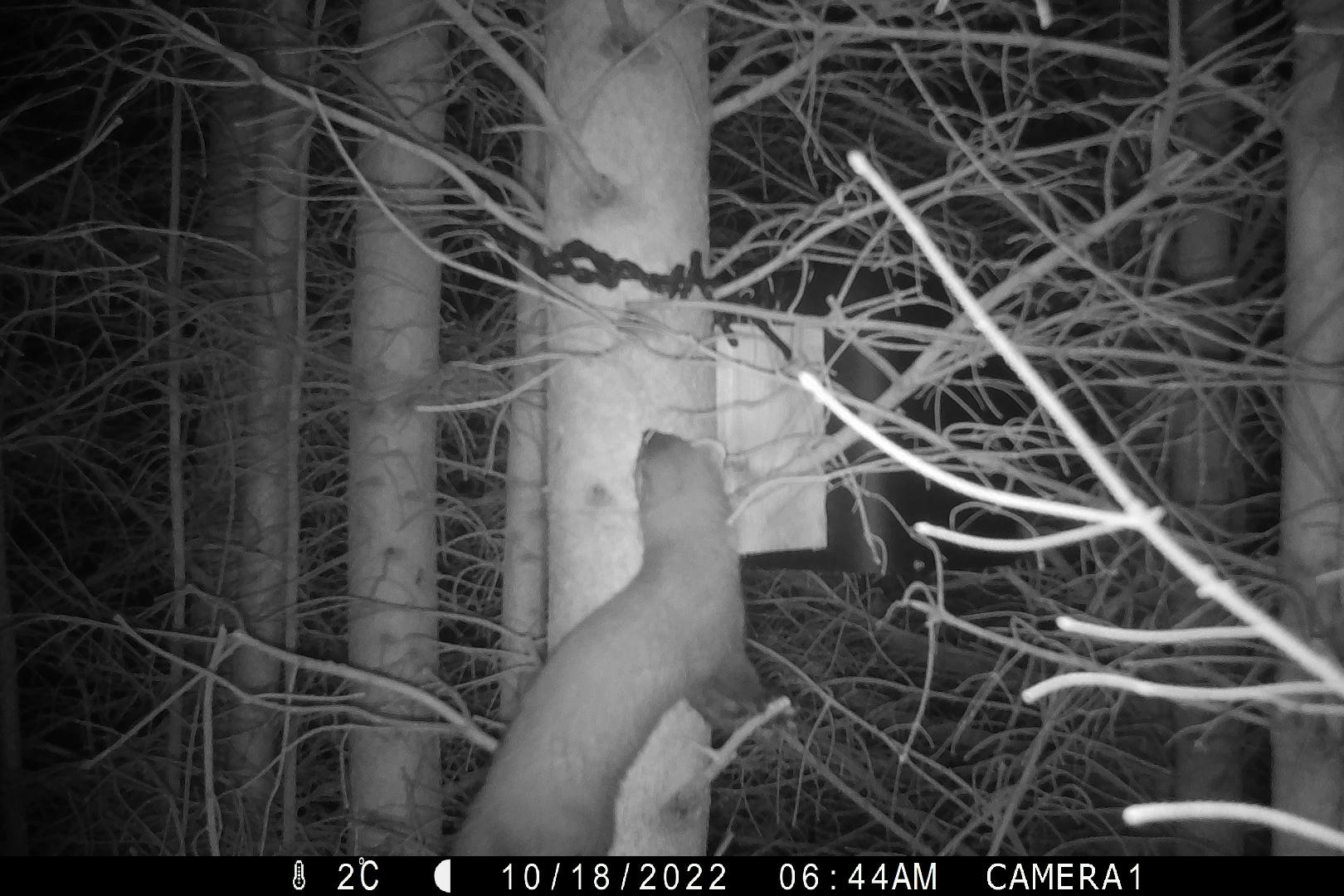Hopes for pine marten numbers in England’s biggest forest
Forestry England has run a project to boost their numbers in Kielder Forest, Northumberland.

A study of pine martens, one of the UK’s rarest mammals, shows it could be strengthening its presence in England’s biggest forest.
The elusive creatures, once thought to be extinct in England after decades of persecution, were caught on camera in Northumberland’s 63,000 hectare Kielder Forest five years ago.
Sightings have increased since, and Forestry England began a project last February to boost their numbers further, erecting 50 denning boxes in one area of conifer forest.
Another area 15 miles away was also studied, this time with no boxes, so wildlife experts could assess the impact of providing the creatures with housing.
Hidden cameras immediately captured images of pine martens checking out the denning boxes within 24 hours of them being installed.
And when experts examined the boxes in autumn, they collected scats – or faeces – from both areas which were DNA-tested to confirm they came from pine martens.
Forestry England ecologist Wayne Penrose said: “Four of the boxes showed clear evidence of martens using them for denning.
“In fact, one inquisitive animal was photographed inspecting a den by a camera installed just 24 hours earlier.
“We also looked for marten scats at set locations around the boxes and found nearly four times the number identified the previous year.
“Increased evidence of pine martens was also found in the area without boxes, in keeping with an upward trend, although not at the same level.
“It is early days and more data is needed, but the results are encouraging. To see such activity around boxes so soon has got everyone buzzing.”
Martens are agile tree climbers, can reach two feet long and have a bushy tail.
They eat small rodents, birds, beetles, carrion, eggs, fungi and berries, and mark their territories with scats deposited in places conspicuous to other martens.